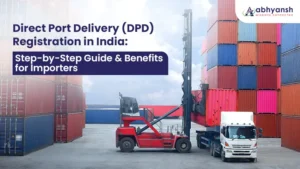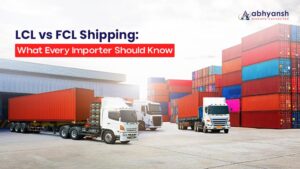As a leading shipping and logistics company in India, Abhyansh has always kept a vigilant eye on the global maritime landscape. The recent report by Alphaliner on the potential overcapacity in container shipping, particularly in the trades between Asia and Europe, offers significant insights that could shape the future of our industry.
The Current Scenario: Capacity Shortages
Alphaliner’s analysis reveals a critical shortage in the number of vessels required for the Asia-Europe trade routes. Despite the addition of 1.14 million TEU (twenty-foot equivalent unit) of new capacity this year, the three mega-alliances still found themselves 36 ships short of the 25 loops needed for optimal operations as of May 10. This shortage has forced carriers to cancel approximately 9.6% of all weekly sailings, disrupting schedules and affecting global supply chains.
The Red Sea Crisis and Its Implications
One of the primary factors contributing to this shortage is the ongoing crisis in the Red Sea, which has necessitated diversions and restructured shipping routes. Should this crisis resolve and normal Suez Canal transits resume, carriers could potentially redeploy around 54 vessels, amounting to approximately 764,100 TEU. While this might initially seem like a solution to the current capacity issues, it also brings the risk of significant overcapacity.
Future Projections: A Double-Edged Sword
Stefan Verberckmoes, an analyst at Alphaliner, highlights that an additional 2 million TEU is expected to be delivered this year. This influx of capacity could help mitigate the current 10% shortage on the Asia-Europe routes. However, it also raises concerns about potential overcapacity, especially if the Red Sea diversions end sooner than anticipated.
Moreover, the demand for extra tonnage in services from India to Europe and from Asia to the US East Coast could help balance the equation. The expected 3% growth in volumes also indicates that the additional capacity might be absorbed by the market, at least in the short term.
The Role of Alliances and Vessel Sharing
The current vessel shortages have led to strategic collaborations among major shipping lines. For instance, Maersk and MSC have resumed vessel sharing to address the capacity discrepancies caused by the Cape diversions. According to Alphaliner data, the Ocean Alliance is short of 20 ships, while 2M and THE Alliance each require an additional eight vessels to meet their operational needs.
Abhyansh’s Perspective: Navigating the Future
At Abhyansh, we understand that the shipping and logistics industry is in a constant state of flux, influenced by geopolitical events, market demands, and infrastructural challenges. The potential overcapacity scenario underscores the importance of strategic planning and adaptability.
We believe that while the addition of new capacity is essential to meet growing demands, it is equally crucial to manage this capacity efficiently to avoid market imbalances. Our approach involves leveraging data-driven insights, fostering strategic alliances, and maintaining flexibility in our operations to navigate the complexities of global trade.
Conclusion
The potential overcapacity in container shipping presents both challenges and opportunities for the industry. As we continue to monitor these developments, Abhyansh remains committed to providing reliable and efficient shipping solutions, ensuring that our clients can navigate these turbulent waters with confidence.
By staying informed and adaptable, we aim to turn potential challenges into opportunities, reinforcing our position as a leading player in the Indian shipping and logistics sector.






